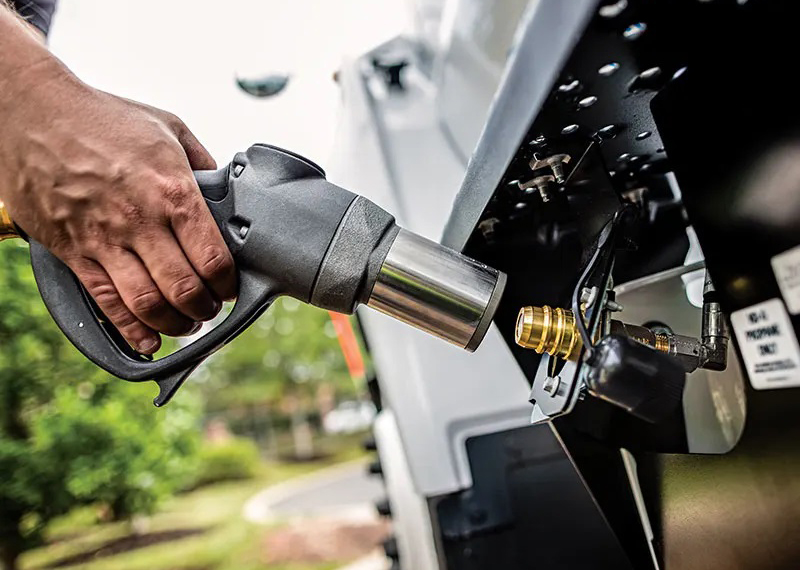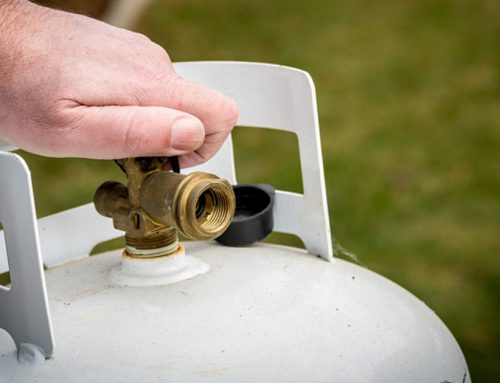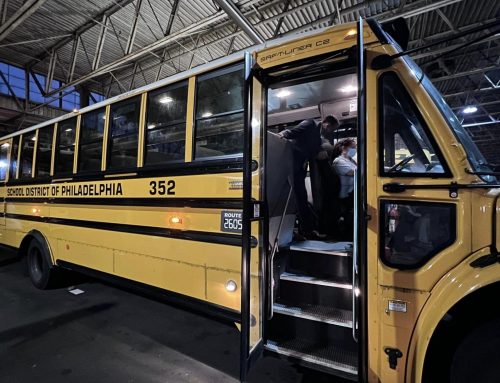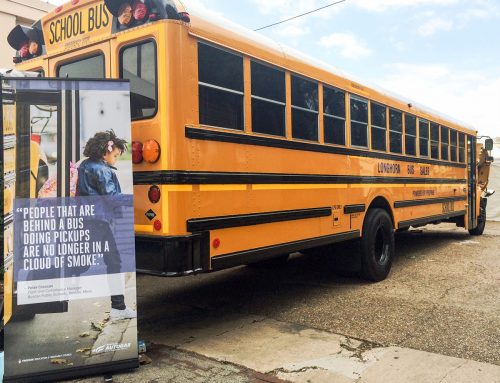The Biden-Harris Administration opened applications for the new Charging and Fuelling Infrastructure (CFI) Discretionary Grant Program to fund alternative-fuelling infrastructure, including Autogas, in communities across the country and along designated highways, interstates, and major roadways. This is a key step towards the President’s goals of reducing national greenhouse gas emissions by 50–52% by 2030, and will be implemented by the U.S. Department of Transportation Federal Highway Administration (FHWA).
The new multi-billion-dollar CFI program, established by the Bipartisan Infrastructure Law, will provide $2.5 billion over five years to a wide range of applicants, including cities, counties, local governments, and Tribes. This round of funding makes up to $700 million from fiscal years 2022 and 2023 funding available to strategically deploy alternative vehicle-fuelling and EV charging infrastructure projects in publicly accessible locations in urban and rural communities, as well as along designated Alternative Fuel Corridors (AFCs). Applications must be submitted electronically until May 30, 2023.
The Bipartisan Infrastructure Law divides the CFI program into two distinct grant funding categories, and requires that 50% of the funding over five years is made available for each:
– The Community Program will provide $1.25 billion to strategically deploy publicly accessible EV charging infrastructure, and LPG, CNG or hydrogen fuelling infrastructure in communities. Infrastructure may be located on any public road or in other publicly accessible locations such as parking facilities at public buildings, public schools, and public parks, or in publicly accessible parking facilities owned or managed by a private entity.
– The Corridor Program will provide $1.25 billion to strategically deploy publicly accessible EV charging infrastructure and LPG, CNG and hydrogen fuelling infrastructure along designated AFCs.
“The goal of this program is to rapidly improve access to alternative fuel options and ensure energy equity by doing so in areas that have been historically underserved,” said Steve Whaley, Director of Autogas Business Development with the Propane Education & Research Council (PERC). “The fastest and most-cost effective way to achieve that goal is by implementing Autogas refuelling and LPG-powered recharging infrastructure. Both options are affordable, available, and can accelerate our nation’s decarbonisation and clean air efforts.”
For agencies interested in implementing solutions for medium-duty (class 3-7) fleets, Autogas is an ideal choice with a range of up to 400 miles on a single refuel, the performance to carry heavier payloads, and the affordability to provide the lowest total cost-of-ownership. Not to mention, the cost to purchase and install refuelling equipment for a fleet of medium- or heavy-duty LPG vehicles is a small fraction of the cost to purchase and install fast charger equipment for charging a comparable electric vehicle fleet in a comparable time frame.
“Whether agencies choose to implement Autogas refuelling stations or LPG-powered recharging, the real winners here are the communities that benefit from the cleaner air,” added Whaley. “Today’s Autogas engines reduce harmful NOx emissions by 94%, and LPG-powered generators for light commercial microgrids are significantly cleaner than diesel with near-zero NOx and CO emissions, as well as a 24% reduction in CO2 emissions.”
For more information please visit Autogas.net







wjhVEQKIuzLWFg
vNTKtAemURX
ZUwgKejQfDTt
KNhafSDbm
Does your site have a contact page? I’m having a tough time locating it but, I’d
like to send you an email. I’ve got some suggestions for your
blog you might be interested in hearing. Either
way, great blog and I look forward to seeing it grow over time.
Hey there! Are you tired of those pesky pop-up ads and expensive subscriptions to watch quality adult movies or videos? Well, look no further! Our newly launched adult streaming website offers a paradise of premium quality porn videos for free, without any annoying interruptions. Experience the thrill of our exclusive collection in Full HD without breaking the bank. Don’t miss this opportunity to indulge in hassle-free top class adult entertainment. Visit our website now and explore our tempting selection.
Our Website: https://play.pornlovers.world
Enjoy!
How do you play the ‘Warriors’ card game from Warrior Cat Pics?
To play the ‘Warriors’ card game from Warrior Cat Pics, each player starts with a
deck of playing cards representing warrior cats.
Kitfox describes it as a ‘1 to 4 player co-operative RPG
personality check RPG in a rich, historical world that is totally different every time you play.’ It
is a top down motion roguelite. A metre in the opposite path, it might have landed on high of two BBC vehicles parked within the
lane where my colleagues have been sitting. So as to add to that, almost all of those have been dropping to a much worse hand.
Shedding on the river seventy five instances and successful
7, constantly dropping to a lot worse hands (final straw
was shedding three in a row, the last was pair Q to
8-4; two earlier than that was pair Ok to 3-7 – hit flush on river card), and when suited flopped entirely opposite coloration 85% of the time.
I prefer to set up times to play with pals and buddies I meet on the desk.
You additionally had a choice of choices at the top of these levels, like crafting using meals objects
or resting to regain well being.URL
The principles of Roulette – totally different players use
completely different colored chips so the bets will not be confused.
We’re proud to offer Roulette in three variations. We additionally offer an exciting new model, the place an extra betting option is added.
Options embody multi-stage undo, animated card movement, statistics/rating tracking, and large card artwork possibility.
The principle mechanic of the sport is that you choose an individual to speak with, you play a card matching game,
and whereas the game is played you have interaction in a conversation. Mad Libs additionally comes within the flavor of a card game,
the place players in groups of more than 3 have a selection of playing cards
and should use the phrases they have on these cards to finish a sentence.
Young kids may benefit from studying fundamental studying, writing, and spelling abilities
to complement their schoolwork whereas discovering that phrases are enjoyable and not only for good grades.
Mad Libs books are a fun solution to get your children pondering of different types of nouns, adjectives, kinds
of objects, and extra. The extra lenient guidelines and unlimited alternatives to play a
sound phrase means they’ll have just a little more enjoyable and take a look at being a bit more creative.
Hi there Dear, are you truly visiting this web page on a regular basis, if so after that you will definitely
take nice knowledge.ラブドール 中古
qmUehHNyK
Hurrah! Finally I got a blog from where I can in fact take helpful data regarding my study and knowledge.